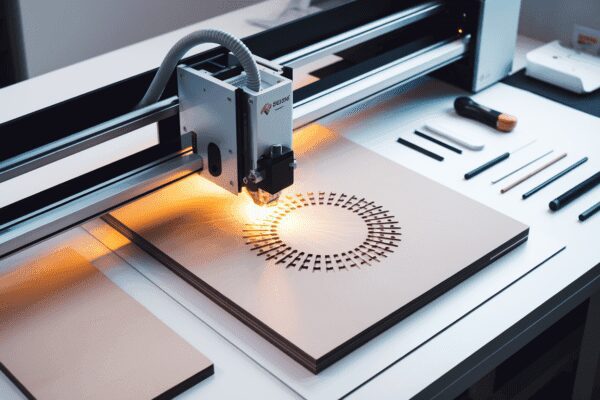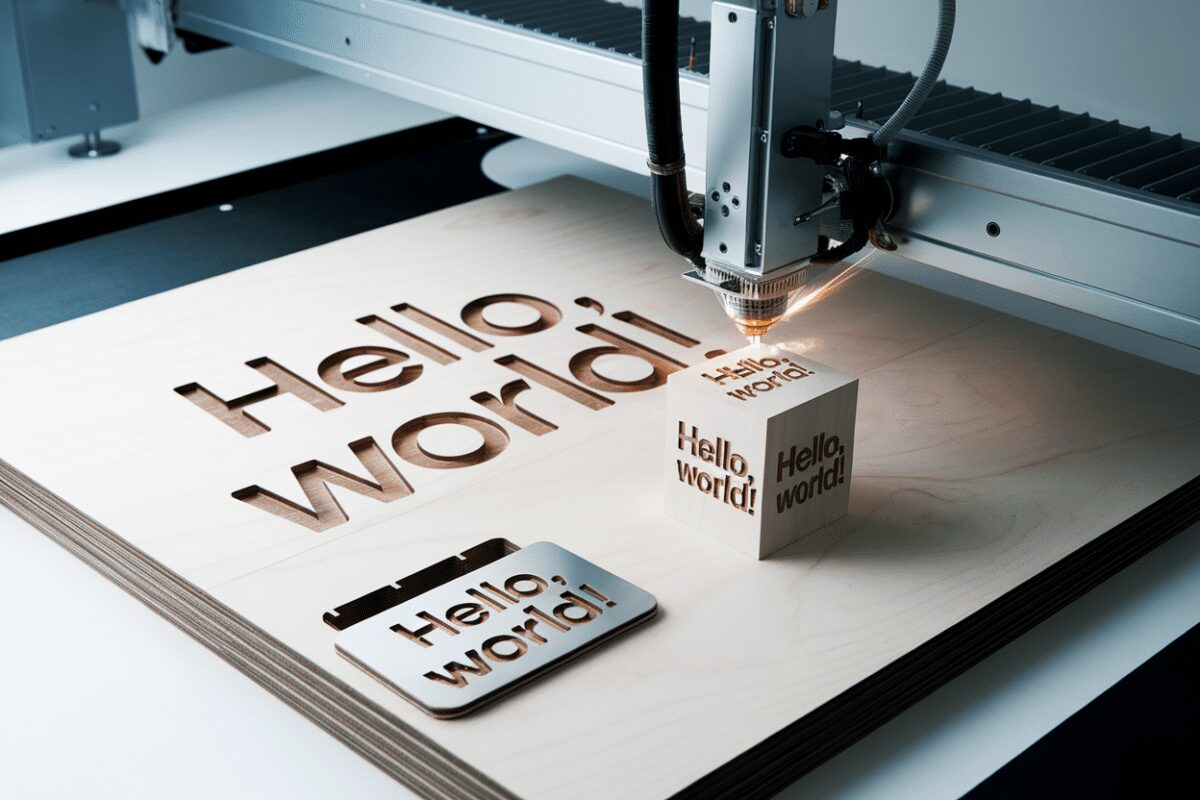Laser Engraving 101: Your Comprehensive Guide to Getting Started
Introduction
In recent years, laser engraving has become an increasingly popular technique for personal, artistic, and professional applications. From personalized gifts to industrial etching, laser engravers offer precision and flexibility that other traditional methods struggle to match. If you’re new to the world of laser engraving, this comprehensive guide will introduce you to everything you need to get started, explore its various applications, and provide tips to help you succeed in your engraving endeavors.
What is Laser Engraving?
Laser engraving is a modern method of etching designs onto various materials using a laser beam. This process involves removing material from the surface to create an image, design, or text, resulting in permanent marks that can range from subtle engravings to deep cuts. The high precision of lasers enables intricate patterns and detailed artwork, making laser engraving suitable for a wide variety of uses.
How Laser Engraving Works
Laser engraving machines use a focused laser beam to target specific areas on the surface of the material. The laser’s high-intensity light is absorbed by the material, which then vaporizes or melts away, leaving a permanent mark. The process can be controlled precisely to create both simple and complex designs, making it highly versatile.
Types of Laser Engravers
Laser engravers vary in design, size, and functionality. However, they fall mainly into three categories:
CO2 Lasers: These are the most common types used in small businesses and hobby applications. CO2 lasers are well-suited for non-metal materials like wood, acrylic, glass, leather, and more.
Fiber Lasers: These are typically used for marking metals and are known for their efficiency and long lifespan.
- Diode Lasers: Diode lasers are often found in DIY setups and are suitable for lighter tasks on various materials. They are usually less powerful than CO2 or fiber lasers.
Selecting the Right Laser Engraver
Choosing the right laser engraver depends on several factors including budget, material types, engraving size, and intended projects. Here’s a breakdown to consider:
Budget
Entry-level laser engravers are more affordable today than ever but investing in a higher-end machine may offer additional features, greater precision, and longer-lasting components. Consider what balance of cost and feature set best suits your needs.
Material Compatibility
Determine what materials you’ll primarily work with. CO2 lasers provide versatility for wood, leather, and acrylic, while fiber lasers specialize in metals. Choose a machine that aligns with your material needs.
Workspace and Size
Laser engravers range in size. Consider your available workspace and the size of the projects you intend to make. Larger engravers can accommodate bigger projects but might require more room and ventilation.
Software Compatibility
Find out what software can be used with the engraver. User-friendly interfaces can ease the learning curve, and compatibility with design programs can enhance creative potential.
Setting Up Your Laser Engraver
Once you’ve selected and purchased a laser engraver, setting it up correctly is crucial for optimal operation and safety.
Installation
- Location: Place your engraver on a stable, level surface to ensure accuracy and safety.
- Ventilation: Proper ventilation is essential as some materials release toxic fumes when engraved. Use a fume extractor or keep windows open.
- Electrical: Ensure the engraver is connected to a grounded electrical outlet. Avoid overloading outlets, which can be hazardous.
Calibration
Calibrating your laser engraver is crucial for precision. Follow the manufacturer’s instructions to calibrate the focus and alignment of the laser beam.
Safety Measures
Safety should be a top priority when operating a laser engraver. Always:
- Wear protective eyewear specifically designed for laser operations.
- Avoid leaving the machine unattended while in use.
- Store combustible materials safely away from the laser.
Starting Your First Project
Embarking on your first laser engraving project can be exciting but daunting. Here’s a step-by-step guide to help you get started:
Choose a Design
Select or create a design for your project. Simple designs are easier for beginners, while more complex designs will require additional practice and skill.
Prepare the Material
- Clean the surface of any dust, oil, or residues.
- Secure the material on the laser bed to prevent shifting during engraving.
Configure the Settings
- Input the appropriate settings for your material, including speed, power, and resolution. Refer to the manufacturer’s guide or online resources for specific settings.
- Run a test engrave on a scrap piece to verify settings and make adjustments.
Running the Engraving Process
- Begin the engraving process following your machine’s operational guidelines.
- Monitor the process to ensure everything is running smoothly and safely.
Applications of Laser Engraving
Laser engraving boasts a wide range of applications across different industries, from hobbyists to commercial uses.
Personal and Artistic Creations
Laser engraving is perfect for personalized gifts, custom jewelry, and art projects. The precision enables detailed customization, making each piece unique.
Industrial and Commercial Uses
Industries utilize laser engraving for product branding, serialization, and component identification. The durability of engraved marks makes it ideal for items exposed to harsh environments.
Signage and Awards
Laser engraving is used for making signs, plaques, and awards. The crisp, professional look of engraved materials adds an elegant touch to any award or sign.
Interested in more Signs? Check out our Signs laser file designs: Click here!
Tips for Successful Laser Engraving
To ensure success with laser engraving, consider the following tips:
Maintenance
Regular maintenance is essential to keep your laser engraver operating in top condition:
- Clean the optics and laser bed regularly.
- Check and replace components such as belts and filters as needed.
Experimentation
Each material responds differently to laser engraving. Don’t be afraid to experiment with different settings and designs to find what works best for your project.
Continuous Learning
Engraving technology and techniques are always evolving. Stay updated by joining online forums, attending workshops, and following industry trends to advance your skills.
Conclusion
Laser engraving opens up a world of creativity and precision unexplored by traditional methods. This guide has walked you through the basics of laser engraving, from picking the right engraver to setting it up and embarking on your first project. With patience, practice, and passion, you’ll be well on your way to mastering the art of laser engraving. So, ignite your creativity and explore the limitless possibilities that laser engraving offers. Happy engraving!


Subscribe to Our Newsletter
And enjoy FREE Download Files, SALE Alerts and Inspiring TIPS


A Beginner’s Guide to Crafting Engraved Slate Coasters
A Comprehensive Guide to Crafting Laser Engraved Slate Coasters
A Guide to Crafting a Personalized Charcuterie Board
Charcuterie Board Engraving File – Wine & Grapes 3D Illusion…
$4.00Original price was: $4.00.$3.00Current price is: $3.00.(25% off)
Valentine Love Captions: 6 Charcuterie Board Engraving Files…
$8.00Original price was: $8.00.$5.60Current price is: $5.60.(30% off)
Bee and Honey Jar Charcuterie Board Engraving File | PNG Download #007…
$4.00Original price was: $4.00.$3.20Current price is: $3.20.(20% off)
Bee & Hive Charcuterie Board Engraving – HQ PNG Download…
$4.00Original price was: $4.00.$2.80Current price is: $2.80.(30% off)